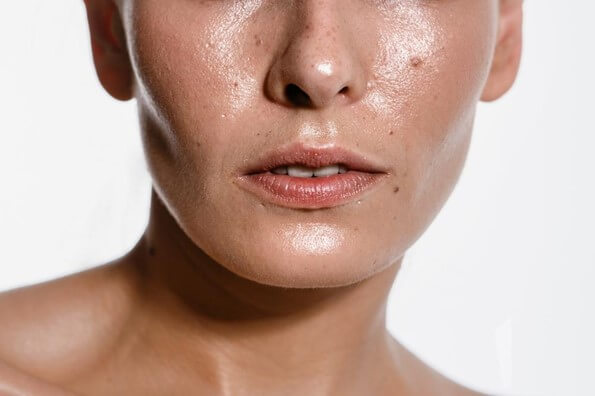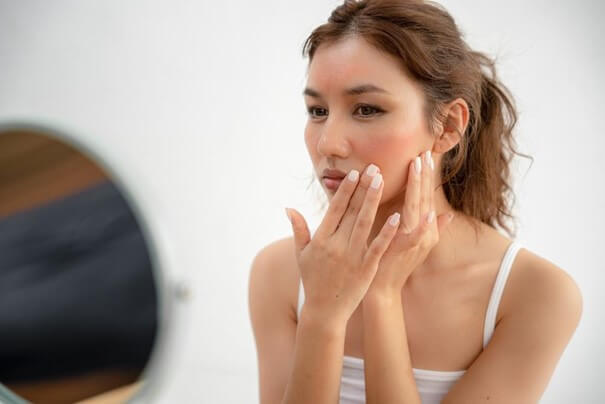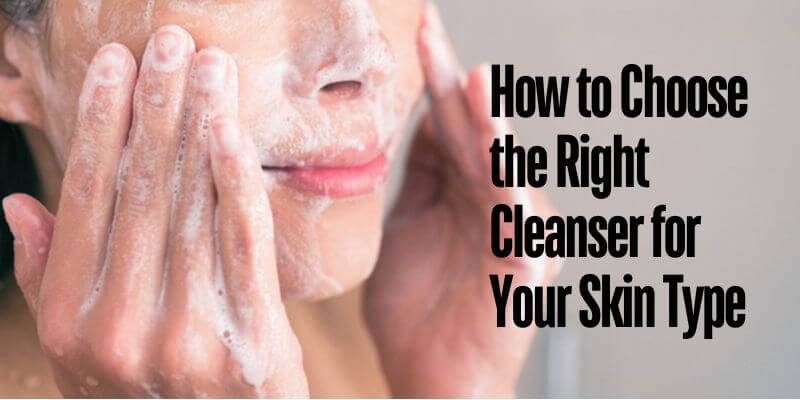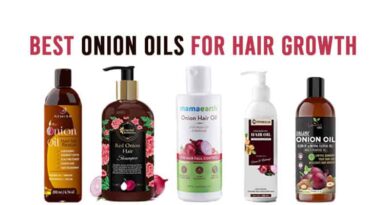How to Choose the Right Cleanser for Your Skin Type
A cleanser is the vital first step in any skincare routine. Because you’re using it day, night, and after a gym session, it’s crucial to use the right formula for your skin type. You may not think choosing a cleanser is as complicated as picking out results-driven products like a serum or moisturizer, but make the incorrect choice, and you could wind up with breakouts, excessive oiliness, or even dryness because the skin has been stripped of its natural oils.
Cleansers have come a long way over the years, and you can find many formulas with active ingredients that help tackle skin concerns ranging from acne and oiliness to dryness and sensitivity. There are also different consistencies, some of which are better for some skin types than others. Don’t just grab the first cleanser you see on the shelf. Read on to find out how to choose the right formula for your skin type so you can lay the groundwork for an effective skincare regimen.
Table of Contents
What are Cleansers, Anyway?
As the name suggests, cleansers remove makeup, oil, dirt, and pollution from the skin. Since most impurities are not water-soluble, cleansing the skin with water alone is not enough, so most cleansers contain chemical or natural surfactants to dissolve dirt and grime. However, we’re not talking about harsh soap here. Face cleansers are formulated explicitly with facial-friendly ingredients.
That said, a cleanser is slightly different from a face wash. While the names are often used interchangeably, a cleanser is gentler and can be used daily — there are also formulas for all skin types. A face wash typically contains harsher ingredients that cater more to oily or acneic skin.
Several face cleansers exist, including gels, foams, creams, balms, oils, powders, wipes, clays, and micellar waters. Which one you need largely depends upon your skin type, which we’ll get to in a sec. Regardless of your choice, a good cleanser should:
- Balance the skin’s natural pH levels
- Effectively remove makeup, dirt, dead skin cells, and other impurities
- Not strip the skin of its natural oils
- Leave no film behind after rinsing
- Be void of harsh ingredients such as parabens, phthalates, sulfates, and fragrance ( consider going the vegan skincare route)
Dry Skin
Dry skin produces fewer natural oils than usual, so there aren’t as many hydrating lipids to protect against external stressors such as pollution, the environment, and UVA rays. The skin appears dull, flaky, and scaly and can feel rough, itchy, and tight. While there’s the bonus of pores being less visible, fine lines and wrinkles are more apparent. You can naturally have dry skin or develop it with age.
Cleansers for Dry Skin
The best cleansers for dry skin are creams, cream gels, balms, oils, and micellar waters. They effectively cleanse without removing any vital oils your skin desperately needs. When shopping for skincare for dry skin, look for products formulated with hydrating, nourishing, and protecting ingredients like ceramides, hyaluronic acid, glycerin, shea butter, jojoba oil, and coconut milk, to name a few. Avoid acids, clays, surfactants, and mechanical exfoliating elements that can rob your skin of vital moisture and potentially create more irritation.
Pro Tips
- Always wash your face with tepid — not hot — water to prevent moisture loss.
- Consider mixing things up by using micellar water in the morning (unless you slept with makeup on, there should be fewer impurities to remove) and double cleansing at night with a cleansing oil or balm followed by a cream or gel-cream cleanser.
Oily Skin
Does your skin get shiny in the T-zone (forehead, nose, cheeks) by mid-afternoon? Are pimples, blackheads, whiteheads, and enlarged pores of concern? Is it challenging to maintain a makeup application? It sounds like you have oily skin, which produces more sebum (oil) than other skin types.

Cleansers for Oily Skin
The goal of a cleanser for oily skin is to balance the skin, not strip its natural oils. The best formulas include gels, foams, micellar waters, and clays. If breakouts and blackheads are a concern, choose a cleanser with bacteria-banishing ingredients like salicylic acid or benzoyl peroxide. Niacinamide is a superhero ingredient that can calm inflammation from blemishes and minimize the appearance of large pores. Remember, just because your skin is oily doesn’t mean it doesn’t need moisture, but choose non-heavy yet effective ingredients like hyaluronic acid or glycerin.
Pro Tips
- Try not to stress — literally. That will only worsen your oily skin due to the increase of the stress hormone known as cortisol.
- While you may be tempted to wash your face frequently, stick to morning, night, and after exercise. Overwashing can cause your skin to produce more oil to compensate for the loss. Consider using a cleanser with less active ingredients, like micellar water, during a post-sweat session to give your skin a break.
Combination Skin
When the T-zone (forehead, nose, and chin) is oily, but the rest of the face looks and feels normal or dry, you have combination skin.
Cleansers for Combination Skin
Combo skin can be challenging because you’re addressing two skin types simultaneously. A balancing gel cleanser can effectively cleanse the skin without causing that tight, dry feeling in your cheeks. Contrary to what you might think, cleansing oils are appropriate for oily skin types because they actually balance oil production without weighing down the skin. Cleansing balms are also beneficial for the same reason. Regarding ingredients, lactic acid (an AHA) is particularly beneficial for combo skin because it’s hydrating and gently removes impurities and dead skin cells.

Pro Tips
- If your cheeks are dry or sensitive, avoid using a cleanser with acne-fighting ingredients. Instead, address breakouts with a topical treatment.
- Use a clay-based cleanser or mask a few times weekly in oily areas.
Sensitive Skin
Sensitive skin looks and feels red, itchy, dry, and red. It’s not uncommon for rashes, hives, or leather patches of skin to appear, and skincare products can cause a stinging or burning sensation. While it’s referred to as a skin type, the reality is that it’s possible to have sensitive skin that’s also dry, oily, or normal.
Cleansers for Sensitive Skin
When choosing a cleanser for sensitive skin, keep it simple. Avoid foams and any ingredients that are too acidic or exfoliating. Use fragrance-free formulas (cream, oil, and balm formulas are best) with hydrating and soothing ingredients like niacinamide, chamomile, hyaluronic acid, glycerin, and ceramides.
Pro Tips
- Avoid cleansers with exfoliating elements (cleansing pads included), sulfates, alcohol, fragrances, and preservatives, as they all trigger sensitive skin.
- Invest in a soft, microfiber washcloth for easy, gentle removal.
- Use tepid water versus hot to cleanse and rinse.
Think About Holistic Skincare and Makeup Habits
A cleanser is just one part of the skincare routine puzzle! However, creating a routine that addresses your concerns is easier once you’ve identified your skin type. As long as we’re talking about your gorgeous face, let’s not forget to mention makeup. You don’t want to sabotage all of your efforts by slapping on low-quality cosmetics. Like your skincare, choose products that are cruelty-free and void of harsh ingredients such as parabens, phthalates, sulfates, and fragrance — consider going the vegan makeup route!
Your skin type may change due to stress levels, fluctuating hormones, diet, and climate, so you may need to adjust your routine occasionally. Regularly checking in with a skincare professional to evaluate your skin and product needs is never a bad idea — cleanser included!
Recommended Articles:




